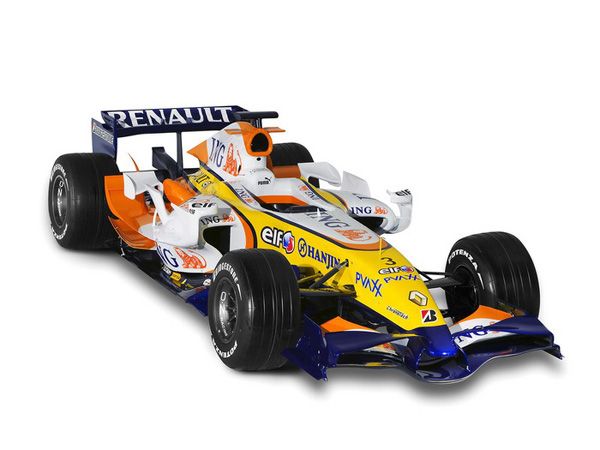The ongoing saga surrounding Renault->ke72’s status in Formula One took another turn after it was announced that the French automaker has signed a letter of intent with Gravity Motorsports, an affiliate of Genii Capital SA, to acquire a controlling stake in Lotus'->ke49 F1 Team. The expected acquisition is considered the first step towards the company’s return to Formula One racing as a full-scale constructor since it sold a 75 percent stake in its old team to the Genii Capital investment company in 2009.
The automaker sold its remaining 25 percent stake to Genii in 2010. Since then, Renault turned its attention away from being a constructor, opting instead to keep its involvement in F1->ke190 as an engine supplier for a handful of teams, including Red Bull Racing, which dominated the series from 2010 to 2013.
Now it appears that Renault’s ready to throw its name back in the series as a constructor, fulfilling company CEO Carlos Ghosn’s promise that Renault would cease in its role as an engine supplier and turn its attention towards purchasing a team of its own or withdrawing from the sport entirely. The new agreement to essentially buy back the shares it sold to Genii means that the Renault’s back in business a full-scale constructor beginning in 2016.
Continue reading for the full story.
Why it matters
So, Renault will continue its 38-year involvement in Formula One racing. I can’t say I’m surprised, but the way this whole episode unfolded really is one for the books. That’s neither here nor there at this point because the important thing is that Renault is back a constructor in 2016, 10 years after Fernando Alonso won his second straight F1 world title during the team’s dominant run in 2005 and 2006.
But now that Renault is back, can we expect to see the same level of competitiveness immediately? The short answer is no, especially if the company can’t make the necessary adjustments to its engine program, which has underwhelmed since engine regulations were changed in 2014.
The first order of business is to improve the engine’s reliability, although to be fair, the Renault Energy F1-2015 power units supplied to Red Bull drivers Daniel Ricciardo and Daniil Kyat have been pretty reliable. The issue is that they lack the pace compared to the engines used by Mercedes->ke187 and Ferrari->ke252. The most important objective heading into the 2016 season is to improve the powertrain system to not only compete against Merc and Ferrari, but do so while also abiding by the upcoming regulation changes for the 2016 season.
Moving away from the track, Renault’s return to Formula One racing could also have some ramifications to its road cars, even though it would be premature to expect something to happen in the next year or so. The most obvious candidate would’ve been the Renault Alpine A110-50 Concept, but Renault has already veered away from the racy concept into a more down-to-earth sports car that will compete against the likes of the Porsche Cayman->ke5. It’s expected to be fast, but not Formula One fast. None of Renault’s current models fit the profile of a car that’s ready to embrace F1 technology, that is unless Renault has some wicked plans for its new flagship model, the Talisman. Don’t count it on it, though.
Here’s what I think: Renault’s return to Formula One is going to have effects on its road cars. Just don’t expect it to happen immediately. Look for it to happen down the road, perhaps on a model that the company hasn’t even announced yet.
Renault F1 R27
Read our full review on the Renault F1 R27 here.

